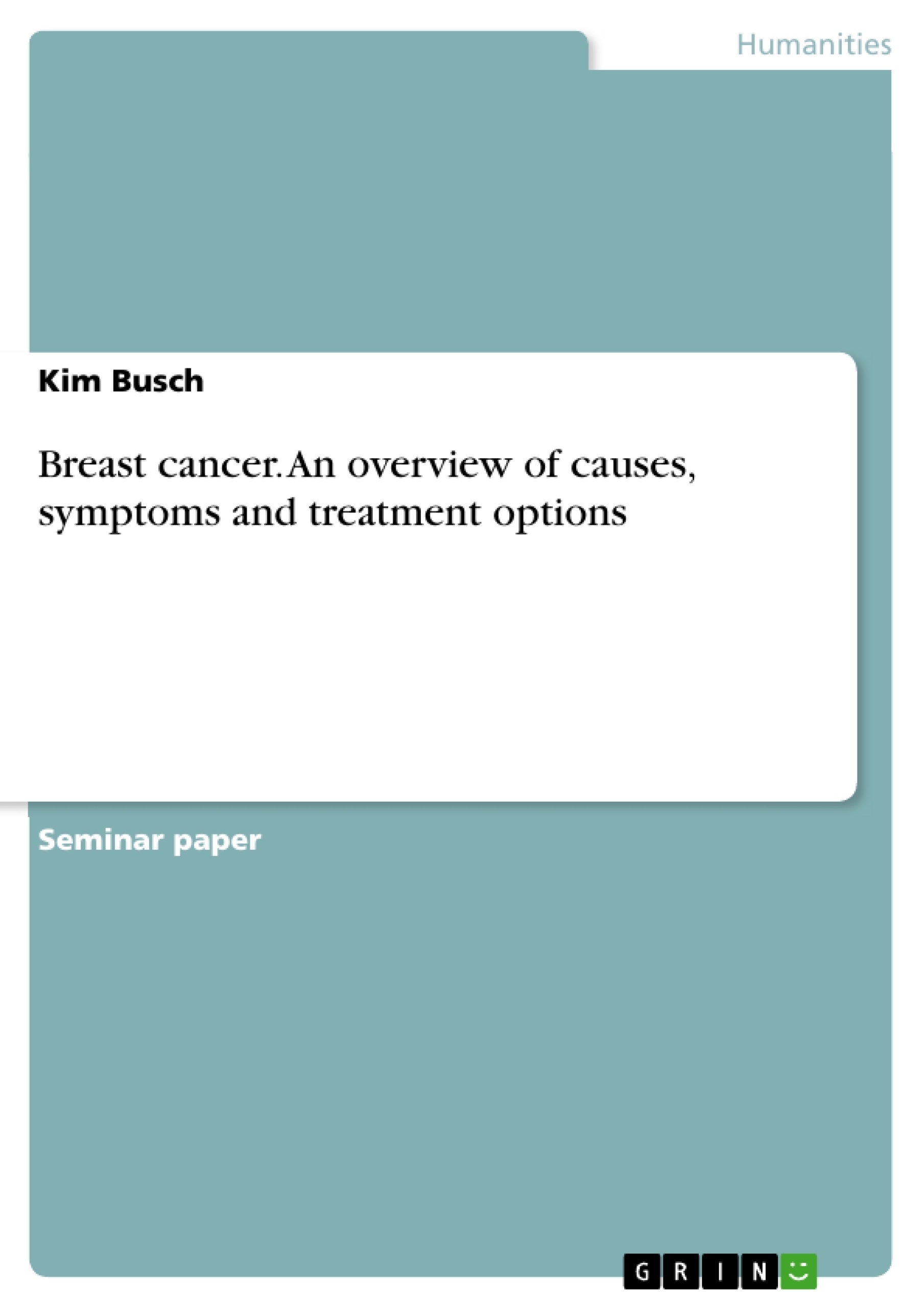Unfortunately, breast cancer is a long-silenced "taboo subject". Everyone knows about the disease, but most people turn a blind eye to it. For example, a woman who has had her breast amputated may be considered unaesthetic or no longer a woman at all. Even affected women often no longer feel feminine. It is therefore necessary for affected women to come out in the open and show their fellow men that they are still fully-fledged women even with only one breast or none at all, and that they have also beaten the battle against cancer.
In the following paper I will deal with the topic of breast cancer and show that as a woman, but also as a man, one should deal with the disease. At the beginning, I would like to explain the structure of the breast, because in my opinion, knowledge about the structure can be beneficial for self-examination. In addition, the word "tumour" should be taken up and explained, because not every tumour means cancer.
Then I would like to talk specifically about breast cancer and give a description of it. In addition, some of the risk factors that are thought to increase the risk of cancer will be discussed. Unfortunately, this point is still very controversial in science because there is too little epidemiological evidence.
Finally, I will make an excursion into preventive examinations and self-monitoring and thus appeal for the importance of taking these preventive measures. This is the only way to detect the disease at an early stage and hopefully defeat it.
Table of Contents
- 1. Introduction
- 2. General
- 2.1 Breast structure
- 2.2 A lump in the chest – benign or malignant?
- 3. Breast cancer
- 3.1 Definition
- 3.2 Causes / Risk factors
- 3.3 Symptoms
- 3.4 Frequency
- 4. Therapy options
- 4.1 Breast-conserving operations
- 4.2 Chemotherapy
- 4.3 Irradiation
- 5. Early detection / preventive examination
- 5.1 Doctor's check / preventive examinations
- 5.2 Self-examination / self-control
- Conclusion
- Bibliography
Objectives and Key Themes
This work aims to provide a comprehensive overview of breast cancer, focusing on the importance of understanding the disease and seeking early detection. The author emphasizes the need to break the stigma surrounding breast cancer and show that individuals, particularly women, can live full and healthy lives even after diagnosis and treatment.
- Understanding the structure of the breast and identifying potential abnormalities.
- Defining breast cancer, exploring its causes and risk factors, and discussing the prevalence of the disease.
- Examining various therapeutic options for breast cancer, including breast-conserving operations, chemotherapy, and irradiation.
- Highlighting the crucial role of early detection through regular doctor's checkups and self-examination.
- Addressing the stigma surrounding breast cancer and promoting the importance of seeking support and maintaining a positive outlook.
Chapter Summaries
The introduction highlights the importance of addressing breast cancer openly and breaking the stigma surrounding the disease. The author emphasizes the need for self-awareness and understanding of the breast structure for early detection.
The "General" section provides an in-depth discussion of the breast's structure, emphasizing its role in femininity and biological function. It explains the composition of the breast, including glandular, adipose, and connective tissue, and highlights the importance of lymphatic vessels for the immune system.
Chapter 3, "Breast cancer", defines the disease and explores its causes and risk factors, while acknowledging the lack of definitive scientific consensus on many of these factors. It discusses the prevalence of breast cancer, emphasizing the increasing survival rates and the importance of early detection.
Chapter 4, "Therapy options", presents a comprehensive overview of treatment methods, focusing on breast-conserving operations, chemotherapy, and irradiation. While the author emphasizes the importance of these treatments, she recognizes their potentially severe side effects.
The final chapter before the conclusion, "Early detection / preventive examination", highlights the importance of both doctor's checkups and self-examination as essential preventative measures for detecting breast cancer at an early stage.
Keywords
Breast cancer, self-examination, early detection, risk factors, therapeutic options, breast structure, stigma, femininity, health education.
- Arbeit zitieren
- Kim Busch (Autor:in), 2008, Breast cancer. An overview of causes, symptoms and treatment options, München, GRIN Verlag, https://www.grin.com/document/1158774



